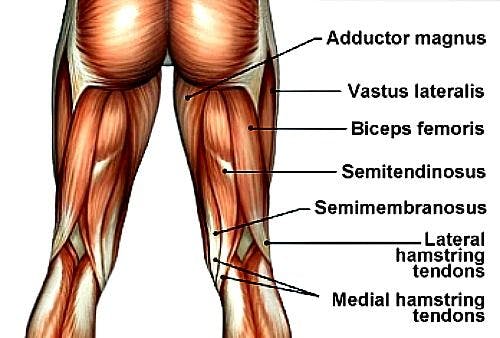
Lesson 17: Functional Anatomy by Joint Action and Exercise of the Lower Body
Functional anatomy of the hip, knee, and ankle joint. Joint actions, muscles, exercises, and planes of motion for the lower body. Detailed analysis of the hip flexors, quadriceps, glutes, hamstrings, adductors, piriformis, calf muscles, tibialis muscles, and fibularis muscles.
Course Description: Functional Anatomy by Joint Action and Exercise of the Lower Body
This course includes tables of all joint actions permitted at each of the large joints of the lower body (lower extremity), along with the muscle groups that contribute to those joint actions. Note, these are the muscle groups responsible for producing these joint actions concentrically (shortening muscle contractions). Examples of concentric actions during exercise include, from the starting position on the floor to standing upright during a deadlift, or from the femur or thigh parallel to the floor to the starting position during a squat.
The course is a summary of the functional anatomy of the hip joint (acetabulofemoral joint), knee joint (tibiofemoral joint), and ankle joint (talocrural joint). Examples include the quadriceps muscle group (vastus medialis, vastus intermedius, vastus lateralis, and rectus femoris) contributing to knee extension during leg extensions; the hip extensors (gluteus maximus, long head of the bicep femoris, semitendinosus, semimembranosus and posterior fibers of adductor magnus) contributing to hip extension during a squat, the hip flexors (psoas, iliacus (iliopsoas), rectus femoris, tensor fascia latae, pectineus, brevis, adductor longus, gracilis, and anterior fibers of adductor magnus) being lengthened during a kneeling hip flexor stretch, or the muscles contributing to plantar flexion via the Achilles tendon (gastrocnemius and soleus).
Additionally, this course includes an activity that tests your knowledge of functional anatomy by having you analyze common exercises included in a functional training program. These exercises include the squat, deadlift, and step-up because they incorporate most of the muscle tissue of the lower extremity from foot to spine. Note, you will be asked to analyze the concentric phase (not necessarily the first phase to follow from the starting position)
Sports medicine professionals (personal trainers, fitness instructors, physical therapists, massage therapists, chiropractors, occupational therapists, athletic trainers, etc.) must master functional anatomy for the analysis of human movement, and the development of sophisticated exercise programs and therapeutic (rehabilitation) interventions. Further, this course is essential knowledge for future courses discussing detailed anatomy like the muscles of the posterior compartment of the thigh (e.g. the biceps femoris, semitendinosus, and semimembranosus), muscle fiber dysfunction (e.g. trigger point development), the synergistic function of muscles (e.g. hamstrings and lower leg muscles contributing to knee valgus), the role of functional training in injury prevention (e.g. posterior oblique subsystem integration), and sports performance (e.g. best programming for optimizing muscle contraction for improving the maximal strength and power performance of each muscle group).
Examples:
- Hip extension: Gluteus maximus, long head of the bicep femoris, semitendinosus, semimembranosus, and posterior fibers of adductor magnus
- Hip Flexion: Psoas, iliacus (iliopsoas), rectus femoris, tensor fascia latae, adductors (pectineus, brevis, adductor longus, gracilis, anterior fibers of adductor magnus.)

Study Guide: Functional Anatomy by Joint Action and Exercise of the Lower Body
Functional Anatomy of the Hip
Functional Anatomy of the Knee
Functional Anatomy of the Ankle
Functional Anatomy of Common Lower Body Exercises: Activity
Functional Anatomy of Lower Body Exercises: Answer Key
Bibliography
© 2024 Brookbush Institute. All rights reserved.

